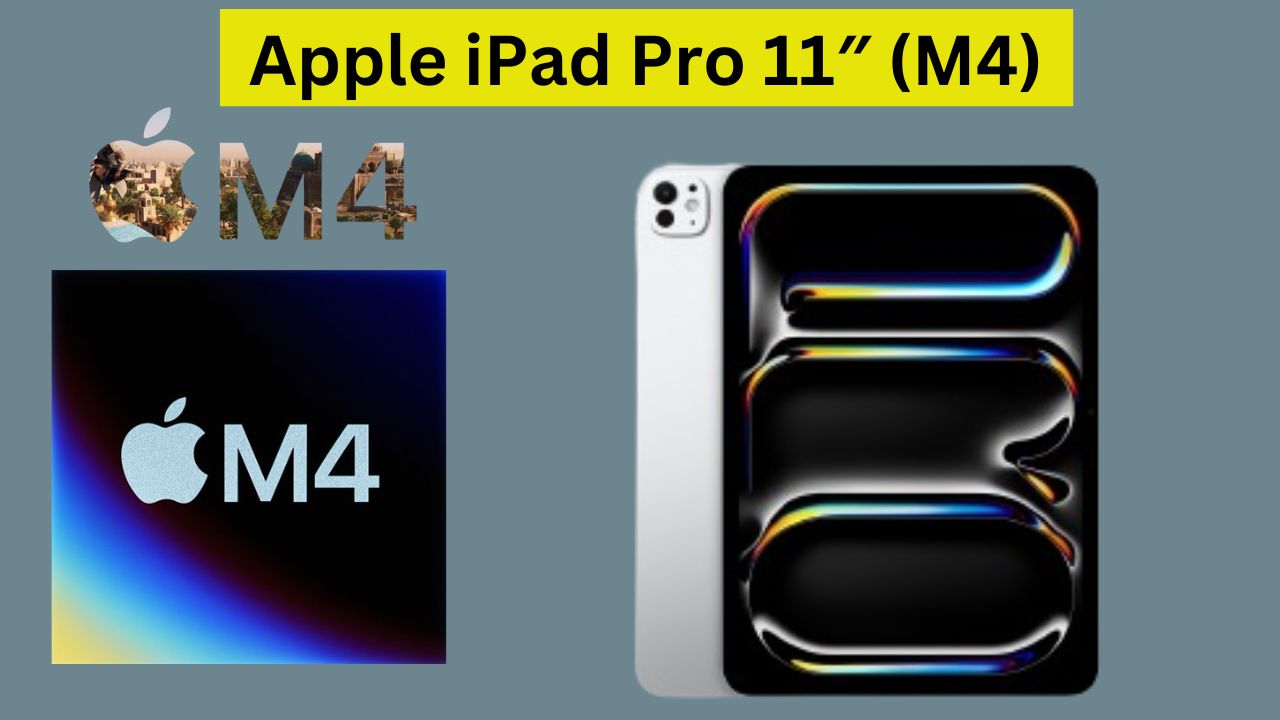
iPad Pro 11 M4 chip features Apple’s most advanced Neural Engine, capable of 38 trillion operations per second — a 60-fold increase over the first Neural Engine in A11 Bionic.
Apple iPad Pro 11 M4 processor OLED display upgrade
Apple enhanced its iPad Pro 11 product lineup on Tuesday by upgrading the silicon in its Air models and introducing a new processor, the M4, into its Pro editions. Additionally, the Pro models received a display upgrade to OLED technology.
The latest iPad Pro 11, featuring the M4 chip and an OLED display optimized for outdoor viewing, stands out as one of the most impressive tablets ever designed,” according to Rob Enderle, president and principal analyst at Enderle Group, an advisory services firm based in Bend, Oregon.
According to Tim Bajarin, president of Creative Strategies, a technology advisory firm in San Jose, California, the dual-layer OLED screens on this tablet represent the pinnacle of screen technology. They enhance the creative process by providing an exceptionally realistic visual experience.
The latest 11-inch and 13-inch iPad Pro models, unveiled during an online prerecorded event, feature dual-layer OLED displays that deliver exceptional brightness.
According to Apple, the Ultra Retina XDR display supports 1,000 nits of full-screen brightness for both SDR and HDR content, with a peak brightness of 1,600 nits for HDR material.

The latest iPad Pro is available in two sizes: iPad Pro 11-inch and 13-inch. Notably, it boasts Apple’s thinnest design to date.
The iPad Pro 11 and 13 provides a nano-texture glass option for its display. Nano-texture glass is meticulously designed to scatter ambient light and minimize glare.
According to Jim McGregor, founder and principal analyst at Tirias Research, a high-tech research and advisory firm in Phoenix, both the tandem OLED display and the etched glass overlay exhibit unique features.
McGregor emphasized that he has not encountered a dual-layer OLED display solution like this before. Additionally, the etched glass overlay stands out as a distinctive aspect of the iPad Pro’s design.
These innovative elements contribute to an exceptional visual experience for users, setting the iPad Pro 11 apart from other tablets in the market.
The display is undeniably impressive,” Enderle observed. “However, my primary concern centers around its long-term durability. Although OLED technology delivers breathtaking visuals, it lacks robustness, particularly given the substantial power requirements it faces. This could potentially affect the display’s overall lifespan.
Subscribe this channel for Tech Knowledge
Indeed, OLED displays are renowned for their vibrant colors, deep blacks, and excellent contrast. Yet, their organic composition makes them susceptible to wear and gradual degradation over extended usage.
As technology advances, manufacturers continually strive to strike a balance between visual excellence and long-lasting reliability. If you’re an iPad Pro user, enjoy the stunning display while being mindful of its potential limitations.
M4 Silicon
Apple took an unconventional approach by incorporating its next-generation M4 silicon into the latest iPad Pro models. Typically, new chips debut on Mac devices first,” explained Tim Bajarin .
“However, Apple’s move emphasizes their conviction that the iPad transcends mere tablet status—it serves as a versatile personal computer.”
This aligns with Steve Jobs’ original vision when he introduced the iPad 14 years ago, positioning it as a potent creative tool that can handle tasks traditionally associated with PCs.
The M4 chip is manufactured using second-generation three-nanometer technology, which significantly improves power efficiency compared to earlier iterations. According to Apple, the M4 chip achieves performance levels equivalent to the M2 chip found in previous iPad Pro models while consuming only half the power.
This technological advancement ensures that the iPad Pro delivers impressive performance without compromising on battery life. Whether you’re tackling demanding tasks or enjoying multimedia content, the M4 chip contributes to a seamless and efficient user experience.
Apple claims that the M4 chip provides 50% faster CPU performance compared to their M2 silicon and delivers four times better overall performance than the M2.
Apple’s decision to introduce a new version of their silicon in an iPad represents a departure from historical patterns. However, it aligns with Apple’s positioning of the iPad as a robust, full-featured main computer option,” explained Ross Rubin, principal analyst at Reticle Research, a consumer technology advisory firm based in New York City.
The iPad’s evolution from a simple tablet to a versatile computing device underscores Apple’s commitment to innovation and pushing boundaries in the tech industry.
Whether you’re a creative professional or a casual user, the iPad’s capabilities continue to expand, making it an exciting choice for a wide range of tasks.
For more Tech Knowledge Subscribe this Channel
You Can Also check more articals



